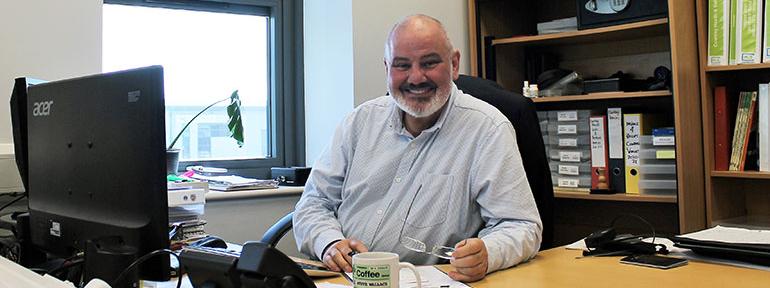
A healthy respect for people’s well-being at work
Posted on June 28, 2022
By Steve Wallace
I’ve said it before and I will say it again – we are good at ‘safety’ in this country. Better than most, in fact. The Health and Safety Executive’s (HSE) most recent report of December 2021 makes interesting reading, even if some of the ‘Eurostats’ are a number of years old. It states: “The UK consistently has one of the lowest rates of fatal injury across Europe; in 2018 the standardised rate was 0.61 per 100,000 employees.
“Compared to other large European economies, the 2018 UK fatal injury rate was a similar order as Germany (0.55 per 100,000 employees) and lower than France (3.07 per 100,000 employees), Italy (1.04 per 100,000 employees) and Spain (1.49 per 100,000 employees).”
Fatal injuries to workers for 12 months up to July 2021 numbered 142 in the UK showing a generally downward trend which has been broadly flat in recent years.
Compare that to the health side of the equation. HSE published statistics that cover work-related ill health also in December 2021. Of the 1.7m workers who suffered from a work-related illness (new or long standing) in 2020/21, 800,000 were stress, depression or anxiety, and 28 per cent were musculoskeletal disorders (500,000 workers).
Meanwhile there were 13,000 deaths from work related ill-health conditions, predominately cancer, so compared with fatal injuries that’s a percentage split of one versus 99 per cent. Conclusion we are worse at ‘health.’
Health vs Safety
Health and safety is of course a well-known term and these days well regarded. We know about it and our employers do too. The difference in understanding the two words relates to time. For health, we implement measures to protect from short, but more usually medium to long term ill-health. Measures implemented for safety are to protect from mostly short term or immediate injury.
In the construction industry workers used to move from site to site and it used to be very rare for workers to stay with the same employer for decades. The default position for many employers then was to make sure that workers were not threatened by physical injury – no breaking bones or gaping wounds. The emphasis was on safety.
As we have developed as a society and a wider civilisation we’ve happily started to realise that getting the worker to the end of the day is not the only goal, it’s also about delivering them in a healthy state to age 60-65 to allow them to enjoy a worthwhile and active retirement. In other words, employers’ responsibility should be to ensure that employees are as fit and healthy as reasonably possible given the passage of time when they leave employment as when they started.
In my life time, society has changed in its approach to workers’ health and safety. Workers breathing in dust is quite rightly no longer acceptable and as a consequence life feels so much more valuable now.
In my sector we instruct on a hierarchy of control measures, which is about managing out risks and hazards if possible and if not, then employing controls – guards, barriers, masks, ventilation, locks, mechanical lifting aids etc. We’ve all seen people wear PPE, for example and that sends out a signal that competent people have taken Health and Safety seriously.
The building site and the office
It’s not just about the building site or factory, it’s also about the office. When it comes to buying a machine that helps workers’ productivity on the shop floor, most businesses won’t hesitate to spend the necessary money, yet the worker that sits at a desk needs to be equally efficient and is therefore equally important, but a lot of employers baulk at spending what’s required.
From an ergonomic point of view, the chair, the shape of the desk and the height of a computer monitor all can have an effect on muscular-skeletal health. Ignore this and employers are designing in long term problems, which in turn can affect mental health and cause stress.
A good office is not about it just looking pretty, it’s true worth and effectiveness is when you put people in it. Just as people should have say in how a job is done, they should have a say in their own working environment. Any discomfort is about health and quality of life and can be as equally as harmful to the individual in an office as an injury to someone on a construction site.
Ultimately therefore, health and safety comes down to good leadership and about respect for others.
